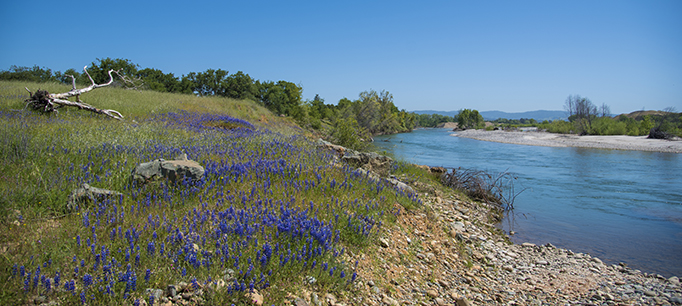Last week a diverse group of stakeholders celebrated the tenth anniversary of the Lower Yuba River Accord—a historic agreement to improve conditions for the river’s endangered fishes, maintain water supplies for cities and farms, and reduce conflict over competing uses for water. Here at the PPIC Water Policy Center we frequently refer to the Yuba Accord as a model for modern water management in California. Here are three reasons why.
- Cooperation: The Yuba Accord happened because parties came together to develop an alternative plan in response to a state order calling for more water to support endangered salmon. By leveraging local management tools—including increased use of groundwater on farms during droughts—the accord has kept even more water in the river for fish than the state called for. This is a great example of how negotiated agreements can get broad buy-in and tap on-the-ground knowledge.
- Integration: Integrated water management gets better results by examining all the pieces of the water puzzle together to see how solutions to one problem might affect other areas. The Yuba Accord is a very effective example of this. The accord hinges on the flexibility achieved by managing surface water and groundwater as an integrated system to benefit salmon. But the augmented river flows provide additional benefits in Yuba County and beyond. The accord authorizes flows downstream of the Yuba to be traded to agricultural and urban communities farther south who face shortages during dry years. Moreover, the revenue generated by water trades has helped fund flood protection upgrades in Yuba County—an area facing high flood risk.
- Planning ahead: The accord demonstrates the advantages of planning for different hydrologic conditions. Careful work went into deciding how surface water and groundwater would be managed in wet and dry years. This meant that during the 2012–16 drought the Yuba was one of few watersheds in the state that was prepared to weather the extended dry conditions. California needs more such watershed-level plans for managing water for ecosystems before, during, and after droughts.
To be sure, Yuba County stakeholders started out with some advantages: in addition to relatively abundant water supplies, the county has a governance structure that makes integrated water management easier to implement. The Yuba County Water Agency (YCWA) is a county-wide special district whose board consists of county supervisors—local leaders for all county matters, not just for water. YCWA is responsible for both surface water delivery and flood management, and its boundaries overlap with the local groundwater basin. YCWA also had some very committed leaders who wanted to find a creative alternative to a protracted legal battle over flow regulations.
Even so, other California watersheds could adopt the accord’s focus on integrated, cooperative planning. One near-term opportunity lies in the implementation of the Sustainable Groundwater Management Act (SGMA), a state law that requires local water districts to bring their basins into balance but leaves it to the locals to decide how to achieve that goal. Another opportunity lies in improving conditions for fish and wildlife in Central Valley rivers as part of the update to the Water Quality Control Plan for the Bay–Delta. The State Water Board is proposing regulations to increase river flows, but is also inviting parties to propose alternatives that take a more holistic approach. This offers locals a chance to leverage the new groundwater management authorities under SGMA to integrate the management of groundwater and surface water. These kinds of pragmatic, consensus-based approaches can generate long-term solutions to some of the toughest challenges in California water.




